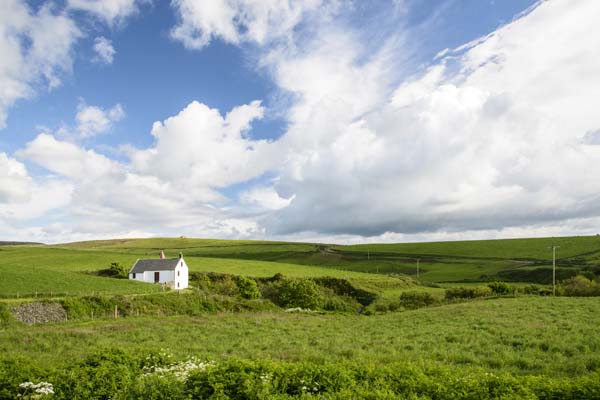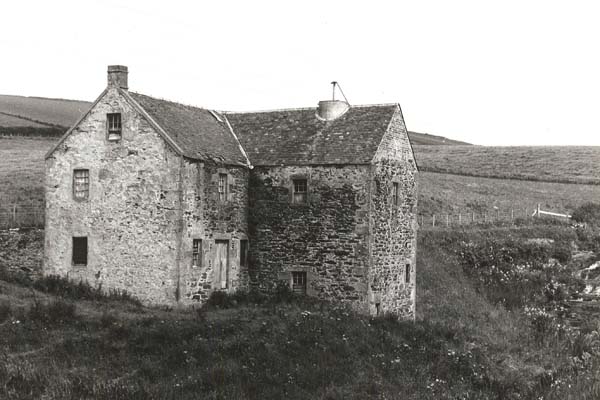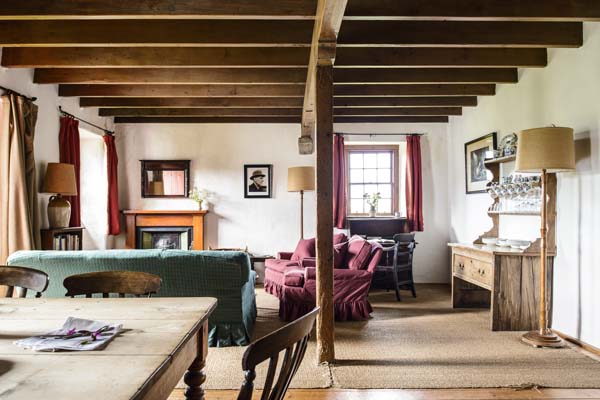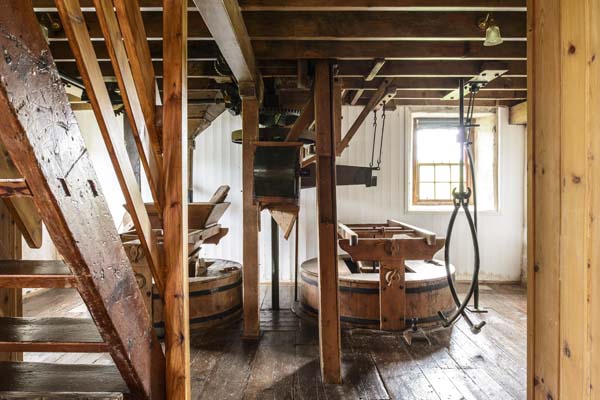
Tangy Mill stands towards the southern end of Kintyre
“I expected the wheel to start turning any minute”.
Each of our 198 Landmarks is remarkable but Tangy Mill on the Mull of Kintyre really stands out to me. I look after 33 of Landmark’s buildings in the North of England and Scotland as well as new projects in the region. It was tricky to choose one special place amongst such exceptional historic buildings, but Tangy Mill I believe is a forgotten gem. Built around 1820, it still feels like a working mill. In fact when I’m there carrying out my regular surveys I expect the miller to walk in at any moment.
So often mills have their machinery ripped out during the conversion process, perhaps leaving a few grinding stones behind as a nod to the building’s original purpose. But Tangy Mill - a working mill until 1961 - is one of the best examples of how a mill can be converted without removing its essence.

Tangy Mill before Landmark's restoration
Landmark acquired Tangy Mill from Mr McConnachie, the last miller, and in 1979 repair work began. Although it had been disused for many years, all the machinery was still there - the dressing, drying, hoisting and grinding machinery, the kiln, stones and shutes and the backshot wheel of its former life. So, as far as possible we kept them in position, with the accommodation and furniture fitted amongst it all. The threshing machine in the bedroom on the middle loft is the only piece of machinery that was shifted, moving three feet to make room for Landmark’s beds.

The living room in Tangy Mill
The primary purpose of the mill is never far from your mind. The wooden posts inside are original, scorched with burn marks from the lanterns that once hung upon them. The bedroom on the drying floor of the kiln has a door that was once used as a ramp for wheelbarrows full of grain; you can see where they have worn it away in the middle. There was once a board across the door to keep in the grain, and the slots that held it in place are still there.
Yet Tangy Mill is a welcoming and enjoyable place to stay. I was last there on a bright summer’s day and couldn’t fail to be wowed as I drove up the steep coastal road, with its hairpin bends carving through the lush fertile landscape. The old telephone box at which you turn off to reach the mill is in itself a landmark in the hamlet. The building, with its harled whinstone and sandstone dressings, was wrapped in flag irises and the grass around the stream was peppered with wild flowers. It is a peaceful, atmospheric place.
I listened to the stream as I went to bed and had a good night’s sleep after the long drive from York. In the morning I watched cows meander down the hill as they were called for milking. Their grain would once have been milled here. I reflected on how forward-thinking Sir John and Christian Smith had been to tackle the revitalisation of this building in such an authentic way.

The machinery in Tangy Mill is still intact
We aim to continue the Smiths mission at the Mill, not only by ensuring that the fabric of the building is kept in good order, but we are looking into the possibility of improving its thermal efficiency and harnessing the power of the river to generate our own power. One of the neighbours, Roly Mauchline, worked on Tangy and our nearby Landmarks on Saddell Bay. He remembers Tangy Mill as a working mill. As a guest, it’s not hard to imagine so either. I expected the wheel to start turning any minute.
• Sleeps up to 6 people (one double bedroom and two twin rooms)
• Prices start at £23 per person per night
Click here to book your stay.
First published in The SPAB Magazine (Winter 2017). SPAB (The Society for the Protection of Ancient Buildings) is the largest, oldest and most technically expert national pressure group fighting to save old buildings from decay, demolition and damage.